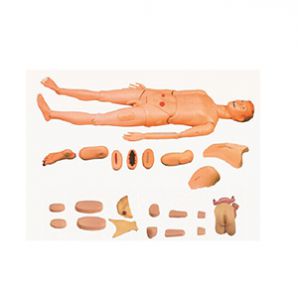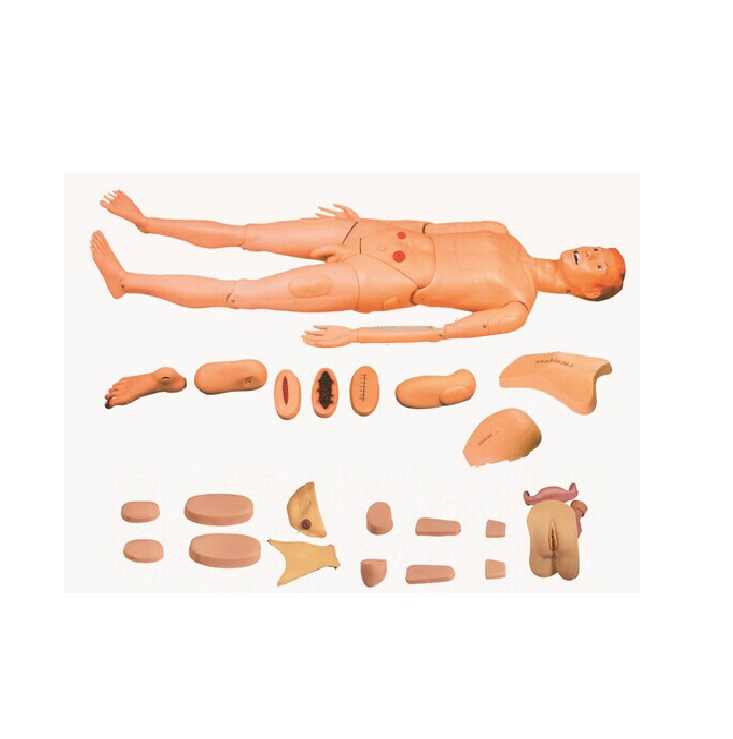
How to provide targeted training for human trauma model
Article tag: Human trauma model medical emergency model

The human trauma model plays an important role in providing targeted training by simulating real trauma scenarios and injuries, providing a safe and controllable training environment for medical personnel, helping to improve their first aid skills and coping ability. Here are a few aspects of how the human trauma model provides targeted training:
...
The human trauma model plays an important role in providing targeted training by simulating real trauma scenarios and injuries, providing a safe and controllable training environment for medical personnel, helping to improve their first aid skills and coping ability. Here are a few aspects of how the human trauma model provides targeted training:

First, diverse trauma simulation
The human trauma model can simulate many types of trauma, including but not limited to open trauma, closed trauma, fracture, burn, internal organ injury, etc. This variety of simulations allows medical staff to be exposed to different types of trauma in training, so that they are familiar with the assessment process and treatment of various trauma.
Second, highly simulated design
The human trauma model uses advanced materials science and simulation technology to highly restore the human structure and trauma characteristics. This highly simulated design makes the experience of training more realistic for medical staff and helps them adapt and respond faster in practice. At the same time, the model can also simulate physiological reactions such as bleeding and pain, increasing the complexity and challenge of training.
Third, personalized training program
According to the needs and level of different medical personnel, the human trauma model can develop personalized training programs. For starters, for example, you can start with a simple trauma simulation and gradually increase the difficulty; For advanced students, more complex trauma scenarios and emergencies can be simulated to test their resilience and decision-making levels.
4. Real-time feedback and evaluation
Human trauma models are often equipped with real-time feedback systems that record the medical personnel's operational data, analyze error types, and give evaluation results. This real-time feedback mechanism helps medical staff find their shortcomings in time and make targeted improvements. At the same time, the evaluation results can also be used as an important reference for training effectiveness, helping medical staff to understand their own mastery of first aid skills.
Five, comprehensive skills training
In addition to training for specific trauma types, human trauma models can also be used for comprehensive skill training. For example, in an emergency situation that simulates multiple casualties, medical personnel need to quickly assess injuries, allocate resources, coordinate teams, and so on. This comprehensive skill training helps to improve the overall emergency response ability and teamwork ability of medical staff.
In summary, the human trauma model provides comprehensive and targeted training for medical personnel through diversified trauma simulation, highly simulated design, personalized training program, real-time feedback and evaluation, and comprehensive skill training. This type of training not only helps to improve the first aid skills and coping ability of medical staff, but also helps to reduce the risk of patients and improve the quality of medical care.

Marketing Center
Hong Kong, ChinaProduction Base
Shanghai, ChinaProducts
Contact Us
 Address: Hong Kong, China
Address: Hong Kong, China
 Phone:+86 19937901373
Phone:+86 19937901373
 Email:sophia@adahealthy.com
Email:sophia@adahealthy.com
 Mobile:+86-0379-65160607
Mobile:+86-0379-65160607








